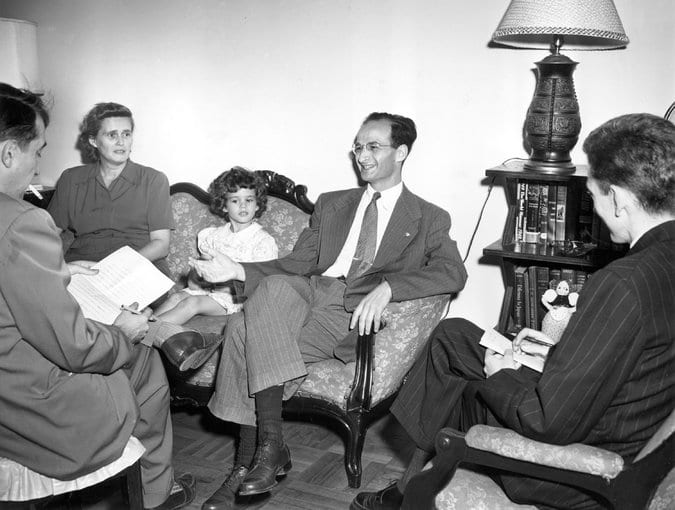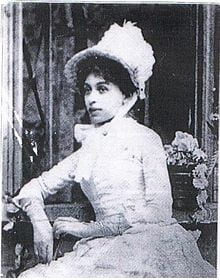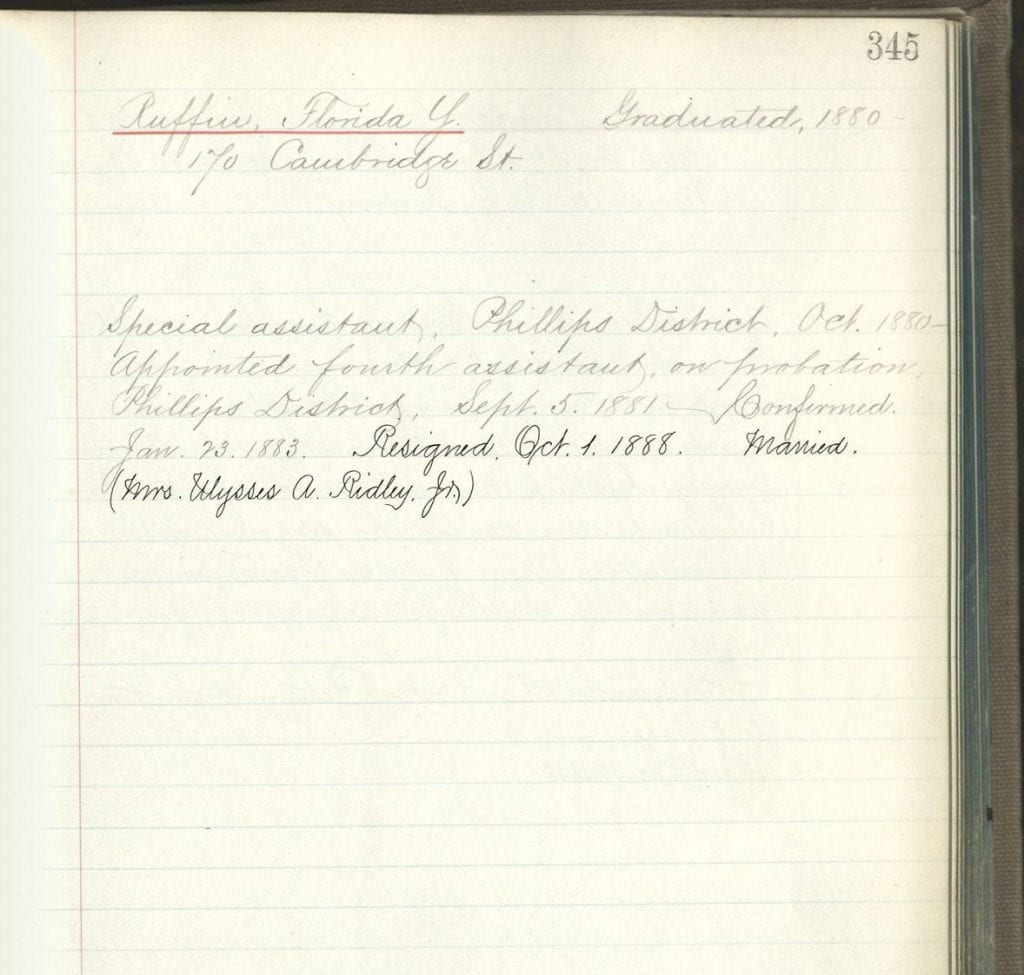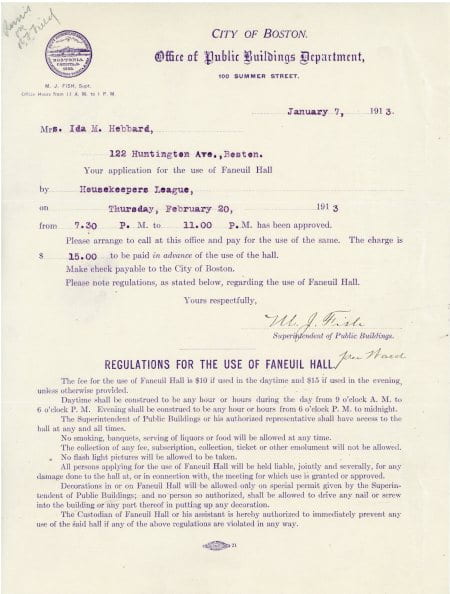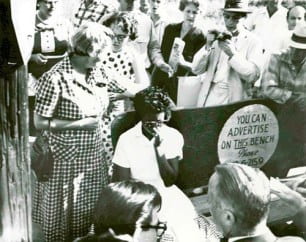By: Heidi Gengenbach (Second of two parts. Here’s Part I)
Wuxaka ra tinhwari hi ku handza swinwe. (Kinship among partridges comes from scratching in the soil together).[1]
Archives and oral traditions hold little information about rural African women’s history. How do rural women themselves keep track of the past? In Magude, a Shangaan-speaking district in southern Mozambique where I conducted research in the 1990s, women’s histories reside in places long invisible to scholars, but in plain view in everyday life.

Colonial-era anthropologists’ photos often captured women’s group activities (here, food preparation) as mere backdrop for “tribal” life. This photo (“Typical Thonga kraal in Gazaland”) appeared in H.P. Junod, “The Vathonga (The Thonga-Shangaan People),” in A. M. Duggan-Cronin, The Bantu Tribes of South Africa: Reproductions of Photographic Studies (Cambridge, U.K.: Deighton, Bell, 1935), Vol. 4.
Through their performance of tasks culturally defined as women’s work, rural women and girls carve out feminine social spaces where they create historical records with female actions at center stage. Using skills honed over centuries of specialized labor—as mothers, farmers, healers, artisans—they memorialize experiences that archives and formal oral traditions disregard. Academic historians have overlooked the evidentiary value of women’s “remembrances” (Shangaan: switsundzuxo), which take unconventional forms, defy disciplinary norms, and challenge the masculinist thrust of “official” stories. But without these sources, we not only lose the opportunity to glimpse rural women’s pasts; we also accept versions of history whose “truth” requires the exclusion of their knowledge.
As in the rest of southern Mozambique, men in Magude have been migrating to South Africa in search of mine work since the late 1800s. Known in precolonial times for its agricultural prosperity, droves of cattle, and bustling trade, Magude became in the 20th century an increasingly impoverished labor reserve, whose patrilineal kinship and marriage rules pressured women to remain on the land and sustain communities in men’s absence. The limited archival evidence on these women falls into one of two categories: it either depicts them as powerless, dutiful appendages of their husbands and male kin, or it vilifies the minority of women who “abandoned” their marital homes and fled the countryside to live in town. Free from the “misery” and (according to European commentators) moral constraints of rural life, so-called “town women” earned money on the margins of the colonial economy, making their way as market traders, food vendors, prostitutes, or—for the fortunate few—low-paid factory labor. In the records of the colonial state as in scholarship relying on archives alone, rural women are the faceless, unchanging background to these events, toiling on in worsening poverty and helpless to improve their lot.

Lili Xivuri with her grandson. Phadjane, Magude district, January 1996. © Heidi Gengenbach, 1995. Courtesy of author.
But rural women’s own accounts tell a surprisingly different story. In Lili Xivuri’s version of her family history, for instance, she refashions the Shangaan tradition of the clan praise song to foreground beer-drinking, marriage choices, soil selection, and common household objects (baskets, mats, awls), instead of the usual themes of chiefly politics or war.[2] The designs female potters “write” on their clay vessels, on the other hand, document women’s experiences of long-distance overland travel and trade.

Women used to dig locally for red ochre (an earth pigment) to make pottery glaze. Here, a potter uses black glaze made from the manganese oxide powder inside a manufactured C-size battery. Facazisse, June 1995. © Heidi Gengenbach, 1995. Courtesy of author.
In the early 1900s, women such as Cufassane Munisse walked for days at a stretch to exchange her pottery for baskets of grain (or vice versa), visiting female kin and friends spread throughout southern Mozambique and in neighboring South Africa. In the course of this regional trade, potters also spread new vessel styles and decorating techniques, defying European stereotypes of rural women’s passivity, home-boundness, and resistance to technological change.
By the 1940s, female body-marking practices show that women in Magude were anything but passive victims of male migrancy and Portuguese rule.

Example of women’s cicatrized tinhlanga from early 20th-century southern Mozambique. Source: E. Dora Earthy, “On the Significance of the Body Markings of Some Natives of Portuguese East Africa,” South African Journal of Science 21 (1924): 586.
Tinhlanga, the cicatrized patterns with which girls and women had adorned their bodies for centuries, offered a powerful medium for contesting the colonial hierarchies that threatened to divide women in new ways. Whether it was Christian missionaries offering literacy in exchange for rejecting “uncivilized” customs such as body-marking, or manufactured consumer goods accessible only to the most successful migrant workers, girls and women appropriated the power of these intrusions by incorporating them into new tinhlanga techniques and designs.

Incised tinhlanga popular in the 1940s-50s mix old and new designs: museve, the ancient chevron pattern; xitlhangu, the shield used by 19th-century Gaza Nguni conquerers of southern Mozambique; xinkwahlana, gecko or lizard; xikero, metal scissors.

An elderly woman’s remarkable array of body art includes geometric cicatrizations along with needle-ink designs depicting the Blue Cross logo, manufactured flower pots, writing, and instant coffee (“Coffe,” the name of the person who gave her this tattoo).
Older women who had once cicatrized girls’ skin with sharp stones or acacia thorns and ash took up imported shoe polish and sewing needles to create tinhlanga depicting the new commodities trickling into the countryside: scissors, flower pots, tins of Blue Cross condensed milk.
Surely aware of the irony, schoolgirls used the blouses and skirts missionaries insisted they wear to conceal prohibited tinhlanga, risking corporal punishment.
A few, such as Valentina Chauke, rebelled more openly, inscribing the letters of their xilungu (European) name on their forearms.
Unconcerned with missionary rules, adult women flaunted the “modern” images emblazoned on their skin, declaring that they were “civilized” too.
The memories women inscribed in their crop fields entered a higher-stakes public domain. Agricultural labor occupies most women here from dawn to dusk, and provides the bulk of household food supply. Although traditional land tenure rules give men the authority to allocate plots, in practice most women choose their own farming sites, and they lend, borrow, and transfer land among themselves as needed. They document these informal transactions in the boundaries (mindzelekana) they “scratch” in the soil around their fields—faint, squiggly lines whose location everyone can guess, but only adjacent field owners know with certainty. As long as there is enough land for all, this system causes few problems. But during the civil war (1976-92), when the stationing of government troops in Magude town (the district capital) made the area a magnet for displaced families, competition for land intensified. By the mid 1990s, acute land scarcity and the diminishing size of subdivided plots drove some desperate women to “steal mindzelekana,” surreptitiously redrawing boundaries to increase their cropping area.

A typical field border in Facazisse, a rural community outside Magude town where land competition became especially fierce in the early 1990s.
Victims’ threatening response to this transgression—“I will bury you in the border!”—and the death by poisoning of several suspects made clear that mindzelekana were far more than just lines in the dirt. Field boundaries recorded agreements among women for whom every inch of cultivable ground was a precious resource, with life-or-death significance in wartime. Erasing these negotiated divisions undermined female authority and the bonds of women’s “cultivating kinship,” while challenging mindzelekana’s important memory work: reminding women of their shared responsibility for community survival.
Magude women’s practices of record-keeping preserve and pass on facts of the region’s past that would remain unknown to historians if we neglected the world of evidence beyond archives and official stories. But is such evidence relevant to researchers outside southern Mozambique? At the very least, it proves that historians don’t always need a paper trail; that important history-telling can happen without writing, even without words; and that gendered people leave gendered traces of their lives, if we know where to look.
Heidi Gengenbach is Assistant Professor of History at UMass Boston. Her doctoral dissertation received the Gutenberg-e Electronic Book Prize from the American Historical Association, and was published by Columbia University Press (Binding Memories: Women as Tellers and Makers of History in Magude, Mozambique) in 2005. Her second book project, Recipes for Disaster: Gender, Hunger, and the Remaking of an Agrarian Food World in Central Mozambique, 1500-2000, will be published by Ohio University Press.
References
[1] Armando Ribeiro, 601 Provérbios Changanas (Lisbon, 1989), 116.
[2] Interview with Lili Xivuri, 29 June 1995, Phadjane, Magude District.








